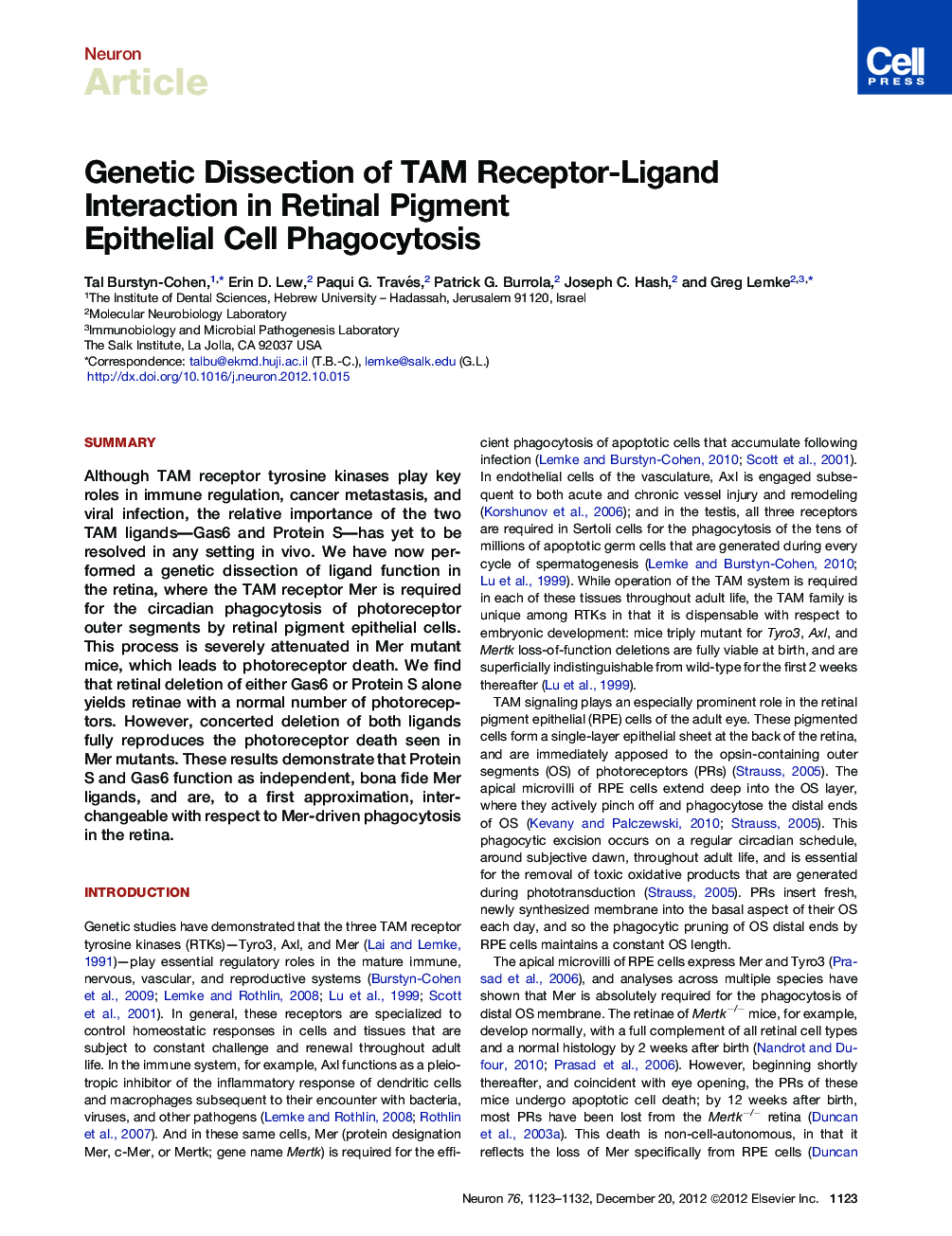| Article ID | Journal | Published Year | Pages | File Type |
|---|---|---|---|---|
| 4321220 | Neuron | 2012 | 10 Pages |
SummaryAlthough TAM receptor tyrosine kinases play key roles in immune regulation, cancer metastasis, and viral infection, the relative importance of the two TAM ligands—Gas6 and Protein S—has yet to be resolved in any setting in vivo. We have now performed a genetic dissection of ligand function in the retina, where the TAM receptor Mer is required for the circadian phagocytosis of photoreceptor outer segments by retinal pigment epithelial cells. This process is severely attenuated in Mer mutant mice, which leads to photoreceptor death. We find that retinal deletion of either Gas6 or Protein S alone yields retinae with a normal number of photoreceptors. However, concerted deletion of both ligands fully reproduces the photoreceptor death seen in Mer mutants. These results demonstrate that Protein S and Gas6 function as independent, bona fide Mer ligands, and are, to a first approximation, interchangeable with respect to Mer-driven phagocytosis in the retina.
► Mutations in the TAM receptor Mer lead to photoreceptor death and blindness ► The ligands that activate Mer in vivo are unresolved ► Genetic tests show that Gas6 and Protein S are independent Mer ligands in vivo ► The combined loss of both ligands leads to the death of nearly all photoreceptors
